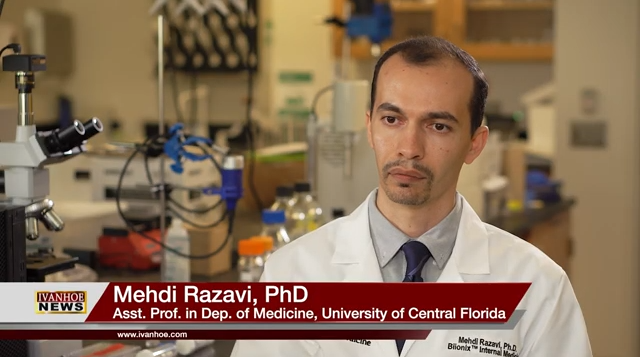Assistant professor in the Department of Medicine at the University of Central Florida, Mehdi Razavi, talks about a new way to repair broken bones n children.
Interview conducted by Ivanhoe Broadcast News in 2023.
What was the traditional way to repair of bones in children?
Razavi: The traditional way was through inserting metal implants. Non resolvable implants into the bone damages to heal bone fractures. And those metal implants are made of titanium assigned as a seal or cobalt chromium alloys. They work very well. However, you need to do a second surgery to remove them after bone healing process is completed.
What do the bio absorbable implants consist of?
Razavi: Bioabsorbable implants that we produce consists of magnesium as matrix and also nanoparticles. Nanoparticles are so small, invisible with human eyes. We synthesize them and we infuse them into the matrix of bio resolvable magnesium materials.
What are the benefits of the implant being bioabsorbable?
Razavi: The traditional method of inserting a metal implants only to remove them after the bone healing is done, is difficult, is stressful and sometimes very harmful for a still growing bodies of children. We think that there is a bit way that you can heal bone damages using bio resolvable implants. You can implant them into the bone defect and they get degraded over the time to add our bone to form into the defect. We are interested in using magnesium because it’s mechanically stronger than bio resolvable polymers, is more flexible compared to bio resolvable ceramics and also is degradable compared to non resorbable metal ions currently used for orthopedic applications. Magnesium already found in the body, so is biocompatible and safe. Magnesium ions released from our implants can also promote bone formation. And also magnesium has mechanical properties very close to the natural bone. So that can prevent extra shielding effect because load can be transferred into the bone rather than various strong metal implant. These can also prevent osteolysis and bone fractures.
What are the risks of it being bioabsorbable?
Razavi: So, the only issue magnesium alloys has is biodegradation rate. Degradation rate is high, that will result in producing hydrogen bubbles. And those hydrogen bubbles may have damaging effects to the surrounding soft and muscle tissue. We are working very hard to control degradation rate of magnesium using advanced manufacturing technologies and using nanoparticles that we have to incorporate them into the matrix of alloy to reduce degradation rate, but also to accelerate bone formation process.
How soon do you think you can get this into patients?
Razavi: So, we are working on engineering technologies of this material to control degradation using manufacturing and studying interaction of magnesium composites that we developed with cells and also in animal models. We are working on fundamental, basic science aspects of this project, but also collaborating with surgeons at Nemours Children Hospital. We also work with our UCF Office of Technology Transfer to really see what challenges we have in terms of translation and commercialization of these materials. I think around 5-7 years, these materials can be translated as the next-generation of orthopedic implants for clinical use.
What would you like to see happen in the future with the implant?
Razavi: So, as we mentioned earlier, a second surgical procedure is very difficult to remove implants, and I think having a biodegradable implant will control biodegradation rate, and also enhance regenerative capacity can be a significant improvement for patients. Improving quality of life of patient, saving health care costs and also reduce in clinician’s effort. I’m also very interested in improving regenerative capacity of these implants so that they can be used for osteoporotic fractures. Because the rate of bone resorption in osteoporosis is very high. And if we have a biodegradable implant with high regenerative capacity that could be used for osteoporotic equations as well. And also one in three children break a bone at some point during their childhood, and I think that the traditional method of inserting metal implants and removing them is very stressful and has psychological issues for children and their parents, so having a biodegradable implants can also overcome these issues.
END OF INTERVIEW
This information is intended for additional research purposes only. It is not to be used as a prescription or advice from Ivanhoe Broadcast News, Inc. or any medical professional interviewed. Ivanhoe Broadcast News, Inc. assumes no responsibility for the depth or accuracy of physician statements. Procedures or medicines apply to different people and medical factors; always consult your physician on medical matters.
If you would like more information, please contact:
Christin Senior
Sign up for a free weekly e-mail on Medical Breakthroughs called First to Know by clicking here




